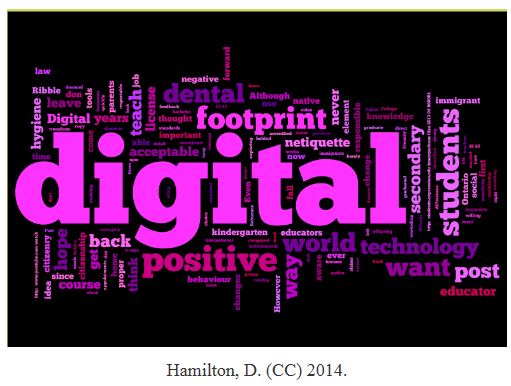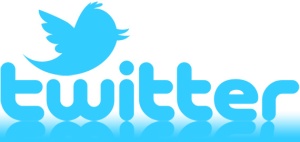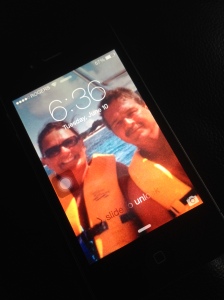
Wn. (2013). Live chat, [Online photo].
Izzard and Disney: A Mashup Made in Heaven Part A
In our current digital surroundings, it has become trendy and possibly advantageous to create subversive video mashups. This concept is not new. McIntosh (2012) reveals, “The very first political remixes can be traced back to Russia during the 1920s, when Soviet filmmakers like Esfir Shub began recutting American Hollywood films to give them a sharper class commentary” (para. 2.1). McIntosh (2012) goes on to provide a pre-YouTube chronological timeline, “political remixers relied on community Web portals like the Guerrilla News Network (GNN) and Adbusters to find, share, and discuss remix works, as it was often too expensive for individuals to host video” ( para. 2.5). Moreover, Petersen (2008) comments about subversive creativity, “In general a decentralized system of communication as the Internet, with the low cost of publishing and the ease of violating copyright, creates a situation where subversive thought and creativity can prosper, and especially the system of wealth within the entertainment industry can be broken, by violating copyright” (para. 11). According to Lang (2008) as he writes about the author of Blogs, Wikipedia, Second Life, and Beyond: From Production to Produsage, he states, Bruns has coined the term produsage to better describe the current paradigm shift towards user-led forms of collaborative content creation which are proving to have an increasing impact on media, economy, law, social practices, and democracy itself” (produsage, 2007). Thus, in our contemporary digital environment, we evolve to produsage by means of a trouble-free and easy on the pocket medium, YouTube.
One of the most popular topics of mashing is the Disney movies. Many producers of mashups have used the past, Disney movies and the present, specifically Eddie Izzard to create a collection of controversial to hilarious mashups. I’m not sure if Walt Disney is rolling over in his grave but if he is aware of the longevity of his Disney movies I think he would approve. Not only are his movies continuing to be popular in today, but comics and unknown producers are also profiting from such fame.
A popular use of Disney movies is the mashup with the performances of comedian Eddie Izzard. According to IMDb, Izzard is “Best-known for his cross-dressing stand-up comedy routines”. He has done everything from acting to voiceovers for video games. “Traditionally, Izzard has focused on the creative possibilities of thinking through absurd situations in real time. He also turns much of the attention on himself and his personality, including his cross-dressing (“It is my manifest destiny to wear a dress on all seven continents”). Contemporary popular culture (Harry Potter, Star Wars, etc.) is also a frequent subject, brought up both to critique its weaknesses and to enhance his anecdotes´(An Eddie Izzard Fansite), His official website states, “Eddie’s stand up is digressive, surreal and free-associative” (Izzard, 2014).
User, sphinoocipital of YouTube has created many remixes and mashups. More specifically, the user has an array of Disney movies and Eddie Izzard performances. “There’s just something so perfect about seeing wholesome Disney characters bring to life all the sly subversive fun of classic Eddie Izzard bits” (sphinoocipital). Contrary to McIntosh (2012) Sphinoocipital creations of Disney and Izzard are post YouTube. In parallel to McIntosh (2012) many of the Disney movies used by Sphinoocipital are pre YouTube.
Izzard and Disney: A Mashup made in Heaven Part B
Eddie Izzard is a 52 year old stand-up comedian who was born in South Yemen. His credits also include television, movies, stage and voiceovers. “Hailed as the foremost stand up of his generation. Star of stage and screen. Tireless supporter of charity. Runner. Political campaigner. Fashion icon. Human” (Izzard, 2014).
Sphinoocipital is a user on YouTube with a lot of uploads to view. This user is imaginative and witty when it comes to subversive mashups. Sphinoocipital, (female or male, not sure) has created six mashups of Disney movies meshed with the clowning around of Eddie Izzard.
In the following mashups created by Sphinoocipital and posted on YouTube, are taken from the comedy feature Dress to Kill (2002). Izzard’s topics range from European history to the growing pains of adolescents. Sphinoocipital has focused on Disney movies and Izzard’s European history skits.
In the interview with Juhasz (2009) with Jenkins, although there is much disdain about YouTube from Juhasz’s students, he concludes with positive comments about YouTube
I am less interested in the fact of who produces, as much as I am how she does so and in what context. I am most interested in media cultures that allow regular people not simply to document their lived experience, not merely to reflect their experience through and to the norms and values of the dominant culture, but to create art and/or opinions about their lives and culture, in the name of a stated goal (of world or self-changing), and to an intended community.
It is interesting to see the context of these mashups by Sphinoocipital. The user is able to mesh the narratives with the movie scenes with finesse. They are seamless. Does this user have a stated goal? Not literally but it seems to be for a community who enjoys the creativity, hilarity and DIY amateur mashups.
Let the fun begin!!
Do You Have A Flag? – Pocahontas.
In the first mashup, “Eddie Izzard get a few visual aids for his classic bit “Do You Have A Flag?” with the help of the cast of Disney’s “Pocahontas” (1995). Chances are this is actually more historically accurate than the original Disney film!” (Sphinoocipital, 2011). In 1998, Eddie Izzard’s comedy act called, “Dressed to Kill” included a vast assortment of jokes including the role of the flag in imperialism. “Izzard jokes about a wide range of topics including…the role of flags in imperialism…” (Video Librarian, 2002, pp. 28-29).
https://www.youtube.com/watch?v=Kr-Wb8FQ8co&list=PL08689D2B21976A2F&index=2
Cake or Death? – Sleeping Beauty.
In the same comedy routine, Dress to Kill, Izzard mocks the Church of England, specifically fundamentalism. Izzard explains that the Church of England dogma of fundamentalism could not possibly exist because you would be shouting out, “You must have tea and cake with the vicar or you DIE!” and “CAKE OR DEATH?!” The latter phrase has become so well known that it is now the name of an Eddie Izzard fansite (IMDb, 2014). The creator writes, “Some good ol’ Disney magic comes to Eddie Izzard’s classic bit, “Cake or Death” as Church of England is taken over by Maleficent and the Good Fairies from Sleeping Beauty (1959). Perhaps they CAN have extreme points of view!” (Sphinoocipital, 2011).
https://www.youtube.com/watch?v=37ALyR3kwqw&list=PL08689D2B21976A2F&index=2
Covered In Bees-Aladdin
Sphinoocipital (2011) mashes Aladdin and Eddie Izzards routine called “Covered in Bees”. “The ambition and thievery of Aladdin (1992) brings Eddies Izzard’s “Beekeepers” bit to life, as Aladdin finds out how difficult it is to flirt when covered in bees!” (Sphinoocipital, 2011). In 1997, Izzard does a routine called Glorious. This routine follows the bible, starting with the beginning of Genesis to the end, Armageddon. The line that becomes famous from this skit is, “I’m covered in bees”. Of course, Izzard is referring to what a beekeeper would say.
https://www.youtube.com/watch?v=TAxKY6gKp0Y&list=PL08689D2B21976A2F&index=3
Hitler
In this creative mashup, user Sphinoocipital is intuitive to the meaning of the dialogue of Izzards routine and by meshing the correct parts of the Hunchback, it’s synchronization at its best. “What with their mutual fondness for murdering gypsies and conquering Paris, The Hunchback of Notre Dame’s Frollo seems the perfect casting for Eddie Izzard’s brilliant summary of the life and times of Adolf Hitler. Also with some cameo appearances from other notable mass murderers!” (Sphinoocipital, 2011). Just as creative is the get right to the point fowl language of Izzard in the routine when mocking Hitler and other mass murderers. It’s a touchy topic, but the rawness of his presentation makes it hilarious.
https://www.youtube.com/watch?v=lMtek9G74Yc&list=PL08689D2B21976A2F&index=6
Criminal Justice – Beauty and the Beast
Part of the Dress to Kill routine Izzard discusses his life, The History, as a Brit and how he ended up in the Americas. He is trying to choose a career with his high school advisor but everything he wants to do he can’t. “Yeah, so, yes, so that was it. There was a spirit of ex-empire, this thing of “things can’t be done,” whereas in America, I thought there was a spirit of “can be done!” The pioneer thing” (Izzard, 2014). The conversation leads into discussing all of the empires of Europe. In his mockery of the empires he talks about Pol Pot. Pot was a Cambodian communist. During the ‘70’s under his dictatorship, 25% of the Cambodian population die due to executions, poor living conditions, forced labour camps and malnutrition. In the mashup, “The cast of Beauty and the Beast (1991) teaches us some valuable lessons about the criminal justice system and mass murderers, as described by Eddie Izzard”. (Sphinoocipital, 2011).
https://www.youtube.com/watch?v=sK08nasPCt8&index=4&list=PL08689D2B21976A2F
Tangled bag
Izzard is famous for his comedy style that, “takes the form of rambling, whimsical monologue and self-referential pantomime” (Wikipedia, 2009). In this monologue Izzard rambles on about an unattended bag at a train station. It seems to be an uninteresting situation, but he creates hilarity out of nowhere. Just as clever, is the user, Sphinoocipital to mash the routine with a Disney movie. “The cast of Tangled (2010) has a run-in with some incompetent security when they come across the ominous unattended bag from Eddie Izzard’s reminiscences” (Sphinoocipital, 2011).
https://www.youtube.com/watch?v=1J0s0ku0ND0&list=PL08689D2B21976A2F&index=5
References
Petersen, S. M. (2008). Loser generated content: From participation to exploitation. First Monday: Peer Reviewed Journal on the Internet, 13(3). Retrieved from http://firstmonday.org/article/view/2141/1948
Prosusage.org (2007). About Axel Bruns. Retrieved from http://produsage.org/about
An Eddie Izzard Fansite. (2014). The man, the myth, the shoes. Retrieved from http://www.auntiemomo.com/cakeordeath/themannew.html



![Digibuzz. (2012, August 8). Funny Twitter Bots You May Not Have to Block, [Online image]. Retrieved from http://www.digibuzzme.com/funny-twitter-bots-you-may-not-have-to-block/](https://dh13kg.wordpress.com/wp-content/uploads/2014/06/images.jpg?w=646)
![Social Daily. (2014). Hashtag (ab)use [Online picture]. Retrieved from http://in.socialdaily.com/articles/2014/03/25/hashtag-ab-use](https://dh13kg.wordpress.com/wp-content/uploads/2014/06/hashtag20abuse.jpg?w=300&h=300)

![Arts Marketing Association. (2014). AMA Conference, [Online photo]. Retrieved from http://www.a-m-a.co.uk/page.aspx?id=399](https://dh13kg.wordpress.com/wp-content/uploads/2014/06/ama-thin-header.jpg?w=646)
![Watts, J. (2013). Overwhelmed by the Internet [Online photo]. Retrieved from http://www.jonwatts.com/2013/12-peices-of-advice-for-bringing-your-ministry-online/](https://dh13kg.wordpress.com/wp-content/uploads/2014/06/overwhelmed-by-internet.jpg?w=300&h=219)



![Overwhelmed. (2011). Techno-trash [Cartoon]. Retrieved from http://www.underwhelmedcomic.com/2011/11/18/techno-trash/](https://dh13kg.wordpress.com/wp-content/uploads/2014/06/2011-11-18_483.jpg?w=646)
![Daily Mail. (2013). Light bulb [Online photo]. Retrieved from http://www.dailymail.co.uk/news/article-1243138/Still-glowing-strong-109-years-worlds-oldest-lightbulb.html](https://dh13kg.wordpress.com/wp-content/uploads/2014/06/article-1243138-07dadecc000005dc-423_306x497.jpg?w=184&h=300)
![Marketoonist. (2012). Planned Obsolescence [Cartoon]. Retrieved from http://tomfishburne.com/2012/04/planned-obsolescence.html](https://dh13kg.wordpress.com/wp-content/uploads/2014/06/120416_obsolete.jpg?w=300&h=216)
